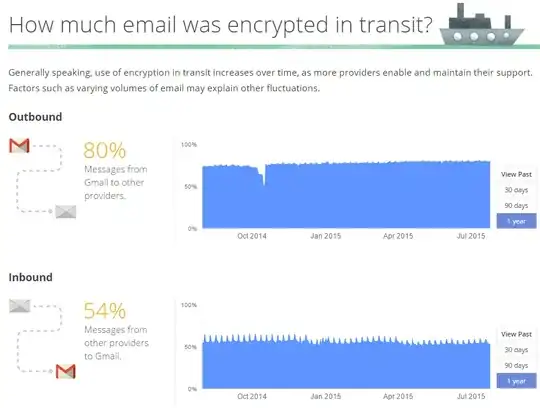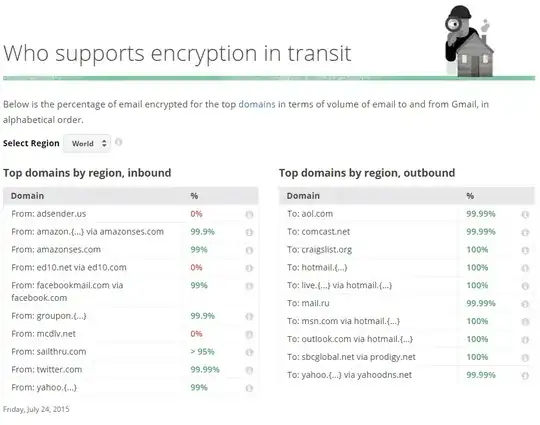TL;DR - Without end-to-end encryption, such as S/MIME or PGP, being supported and used by both sender and recipient, it's a fair presumption that your e-mail has been transmitted or stored in the clear, or otherwise readable by a third-party, somewhere along the way.
I think you have some mis-conceptions of what S/MIME and SSL/TLS are, or how they work.
S/MIME is a mechanism for providing end-to-end message security. Encryption, digital signature, decryption, and signature verification are all done at the endpoints by the client software. The intervening e-mail servers and service providers have nothing to do with this, as the messages get passed along just like any other. Further, and perhaps most importantly, S/MIME must be supported by both the sending and receiving clients in order to work. This is beyond the ability of any single e-mail provider to ensure.
That being said, I'm not aware of any common freemail provider (i.e.: GMail, Yahoo, Hotmail) that is currently facilitating S/MIME in their browser-based clients. Certainly none of them are, nor would they want to be, enabling it as a default.
The reason this cannot work at the service provider level is because of the requirement for both endpoint clients to support the protocol. Since the service provider of the sender has no control over the client software used by the recipient, enforcing S/MIME use on outbound messages would result in many (if not most) recipients not being able to read the sender's e-mails.
The only conditions under which S/MIME will work are when all participants in the e-mail conversation have S/MIME-compatible clients, and everyone has (and has verified) each others' public keys. Again, this is not something that any individual e-mail service provider can effect. They may conceivably be able to facilitate this between their own users, but they do not have the same power to protect e-mails going to/from external endpoints.
SSL/TLS are technologies commonly used to secure communications between clients and servers and from server-to-server. However, here we again run into a similar situation as with S/MIME - both parties to the conversation must support it. While some service providers may do this, no service provider can guarantee you that SSL/TLS will be applied to every message you send because they do not have control over what the receiving server is configured to support.
To address your concerns more concisely, point-by-point:
None of the above use S/MIME. While it would be a nice feature for them to support in their web clients, it would be infeasible for them to guarantee that it will work for all recipients. You can get around this to some degree by using your own e-mail client with S/MIME support, instead of using the web interfaces. However, again, this will only work where you have coordinated this with your intended recipients.
SSL/TLS is commonly used to protect the web sessions by which e-mails are composed, and the client connections by which they are sent. It's also used to protect server-to-server communications along the way, but no service provider can guarantee that every recipient's e-mail servers or client will support and maintain that protection along the way.
Many providers do use SSL/TLS, but you should check with yours yourself if you're concerned. Again, though, this cannot guarantee that your e-mail is protected through transmission and storage every step along the way to every recipient.
Any time you are sending/receiving e-mail which is not protected by S/MIME, PGP, or a similar end-to-end encryption solution, you must assume that the message has been transmitted or stored in the clear, or in another form readable by a third-party, somewhere.
The last point touches on an issue I've not yet addressed - e-mail storage on the server. All e-mail service providers, by the nature of their service, must store e-mails exactly as they were received or by using some form of encryption that they themselves can reverse. Otherwise, they will not be able to forward the e-mail on in a readable format to others or display it to you in your web browser. If you're not using end-to-end encryption, that means your e-mail is being effectively stored in the clear. This leaves it vulnerable to malicious insiders, or anyone who manages to hack into your e-mail account or the server's database.

